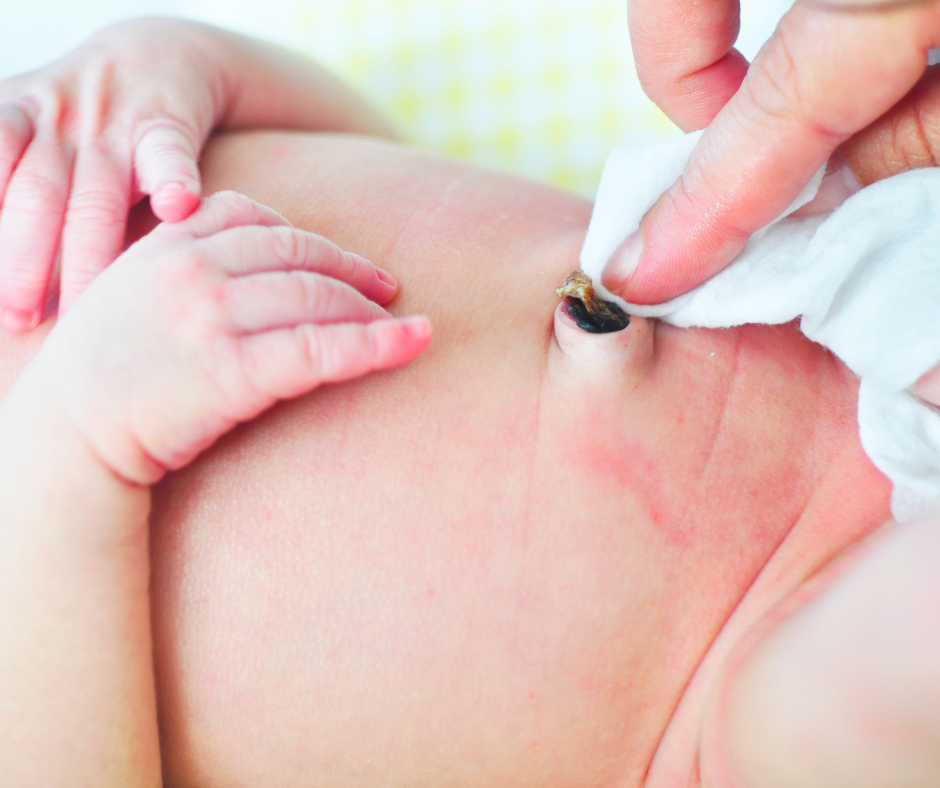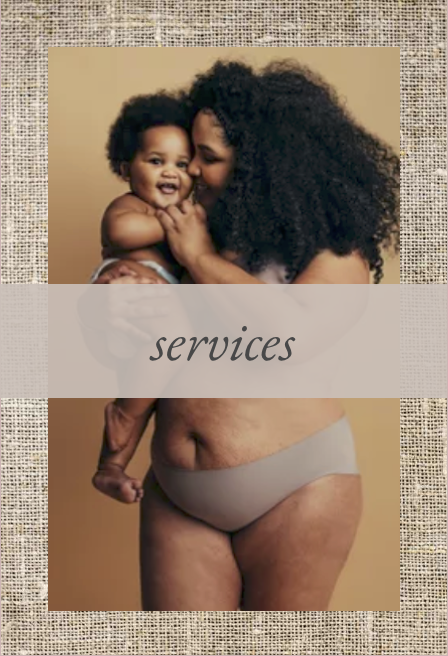Kim@BirthingDays.com | 541-733-4002
Are you wondering about newborn umbilical cord care?
Pst….Alcohol is no longer recommended to care for the stump. I know, I know… Your mom and grandma may say otherwise, but let me share some tips with you.
As the parent of a newborn, you’ll want to know about umbilical cord care, including how to keep your baby’s umbilical cord stump dry until it falls off, identify the signs of infection, and when to call your healthcare provider.
Umbilical cord care seems to constantly be changing. Alcohol was once used routinely but isn’t recommended anymore—so what’s the alternative?
Here are some simple guidelines to help you navigate umbilical cord care.
What Is An Umbilical Cord and When Will It Fall Off?
The umbilical cord delivered nutrients and oxygen to your baby in the uterus. Soon after your baby is born the cord is clamped and cut. Your baby wouldn’t feel this as the umbilical cord has no nerves in it.
The clamp is usually kept in place for 24 to 48 hours. It is removed once what remains of the cord has dried and no longer bleeds.
Once the clamp is removed, what will remain on your little one’s belly is a little stump. As the umbilical cord stump dries, shrivels, and hardens, it will go from a yellow color to a brownish black.
Baby’s umbilical cord may fall off anywhere from 3 days to 2 weeks after birth. How long it takes may depend on how you care for the cord stump.
How To Care For Your Newborn’s Umbilical Cord
Here are some umbilical cord care tips to follow:
Keep it Clean
Experts recommend “dry cord care,” which means allowing air to reach the cord stump and not covering it in water or ointments. You may have heard of dabbing rubbing alcohol on the stump, but nowadays experts tend to recommend just letting it be. Ask your healthcare provider for advice if you’re not sure what to do.
Air the Stump Out
Let air get to it as much as possible. Keeping it dry will help the stump to dry up and fall off. Fold baby’s diaper down so it can get air. Skip onesies until the stump falls off if possible.
Stick to Sponge Baths
Until baby’s cord falls off, you should only give him sponge baths. Babies don’t need lots of bathing anyway. Put baby on a bath seat, and use warm water, gentle soap, and a washcloth to clean baby’s skin—but avoid the cord stump. If it does get wet, dry it with a soft cloth.
Diaper Delicately
Try to prevent your newborn’s diapers from rubbing against the stump by folding the top of the diaper down under the cord stump, or choosing a disposable diaper with a cutout notch at the top.
Change Diaper Frequently
Change wet and dirty diapers promptly so they don’t leak upward toward the navel and aggravate your baby’s healing cord.
Dress Loosely
Choose loose-fitting clothing that doesn’t press against the stump or outfits with a special cutout for this area. Instead of onesies that snap at the crotch, try kimono-style bodysuits, which tie on the side for more air circulation and less rubbing.
Leave It ALONE!
Let the scab fall off on its own. Never pull it, even if it seems to connect by only the tiniest thread. If it gets yanked off too soon, it could start bleeding continuously. If this happens, call your baby’s doctor immediately.
How to Clean Umbilical Cord
If for some reason the umbilical cord needs a little TCL then you can do a light gentle cleaning.
Alcohol was once used routinely for newborn cord care, but it isn’t typically recommended anymore. Here are a few natural ways to clean the umbilical cord:
Sterile water
If the stump is a little stinky or dirty, you can use a wet Q-tip to remove the dirt. Dry it well with a soft cloth afterward.
Breast milk
Breast milk is full of live probiotics, antibodies, and antibacterial properties. Squirt a little fresh breast milk onto the stump to keep it from getting infected, or treat an emerging infection (talk to your health care provider first if you suspect infection).
Witch hazel
Some moms use witch hazel instead of traditional alcohol, but many brands of witch hazel contain quite a bit of alcohol. If you want to use witch hazel, pick a brand that is pure, like this one.
What Do I Do When the Cord Falls Off?
Once the baby’s umbilical cord falls off, you can bathe baby normally. Be aware that the stump may still look red and raw, and can even appear to be a little crusty, but should become more “normal-looking” in anywhere from a few days to 2 weeks.
Innie vs Outie
Is there any way to know or tell if baby is going to have an innie or outie? Nope! A lot of babies look like they may have an outline, but their belly button turns into an innie the more they grow. There isn’t any way to “make” a belly button into an innie or outie.
Infected Umbilical Cord
It’s unlikely your baby’s umbilical cord stump will become infected, but if you notice any of these signs of an infected umbilical cord, contact your baby’s healthcare provider.
These are some of the signs of an infected umbilical cord:
- Fever
- A smelly yellow discharge from the stump area
- A reddening of the skin around the stump
- Swelling of the navel area
- Your baby cries when you touch the stump, indicating it is tender or sore.
Sometimes when the stump falls off, baby will be left with a red mass called an umbilical cord granuloma. The mass may be moist or inflamed, but it’s not an emergency and can be taken care of easily. If your baby has a granuloma, don’t put him in bath water. Call your pediatrician right away.
If you notice signs of infection, call your pediatrician ASAP.
Final Thoughts On Umbilical Cord
Leaving the umbilical cord stump to heal on its own is the best thing to do. Keep an eye on it and make sure it’s not getting infected—but otherwise, let nature take its course.




